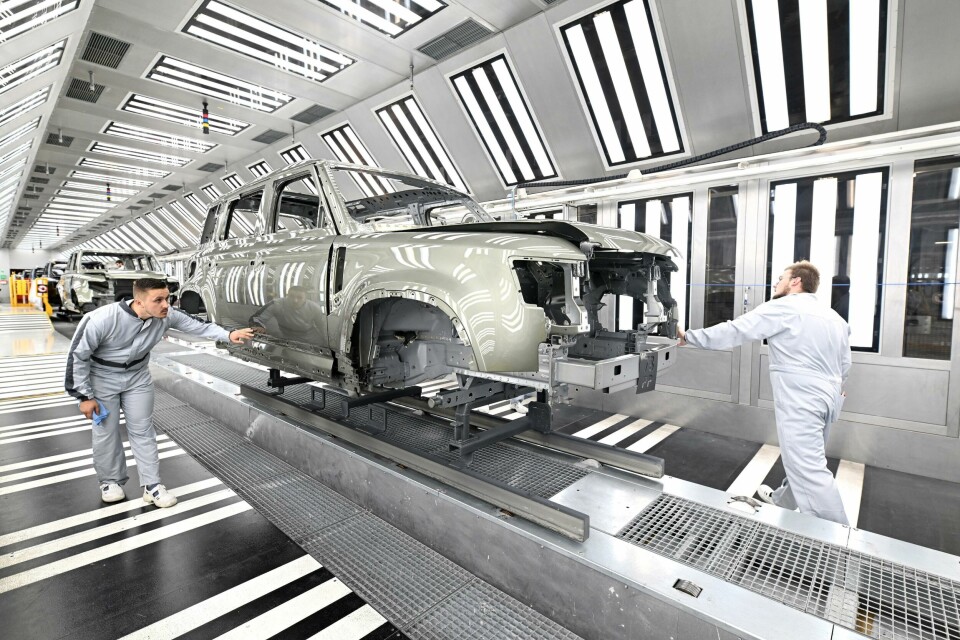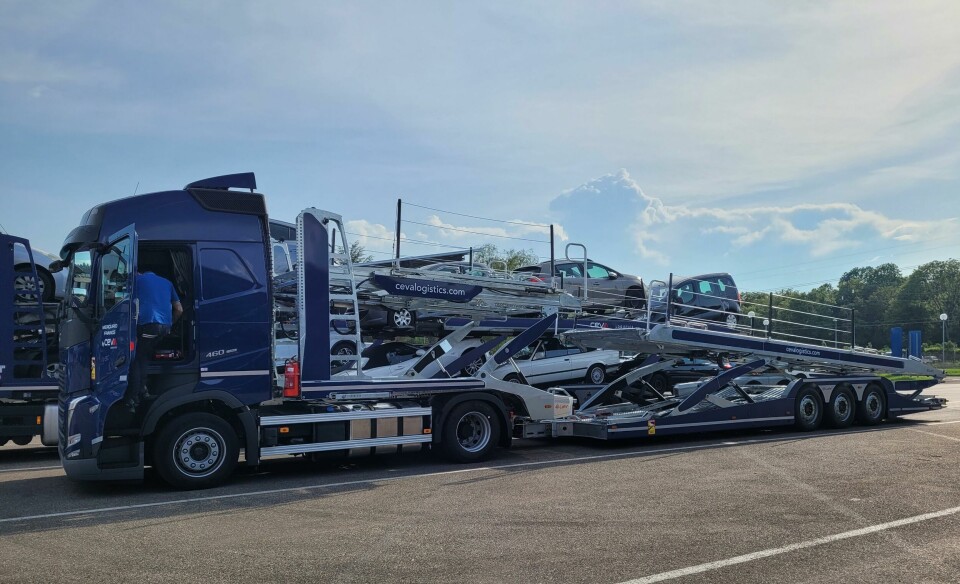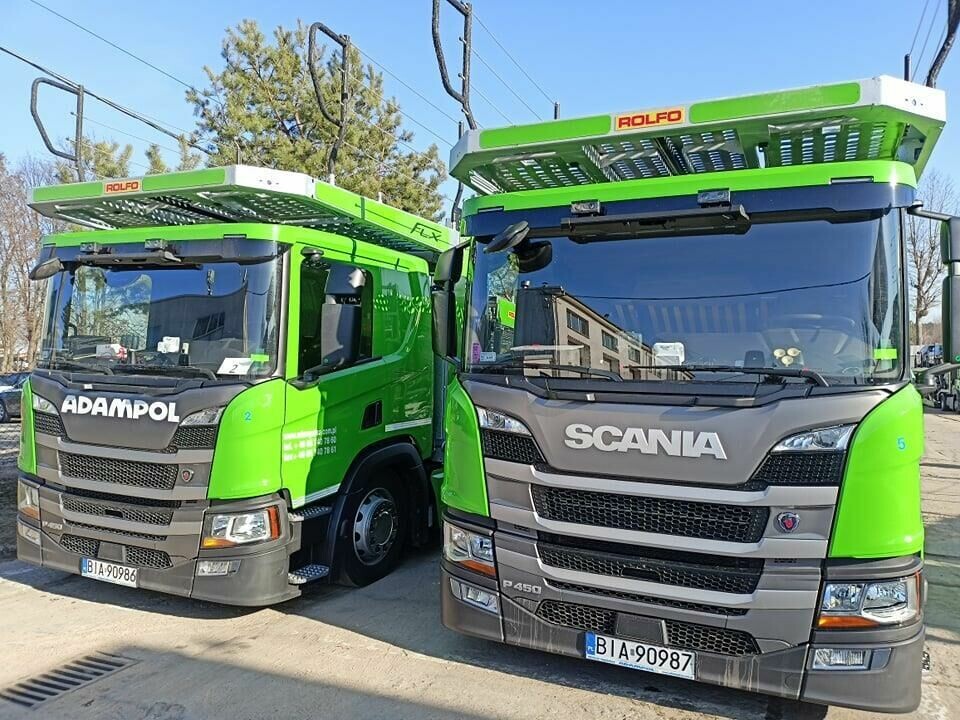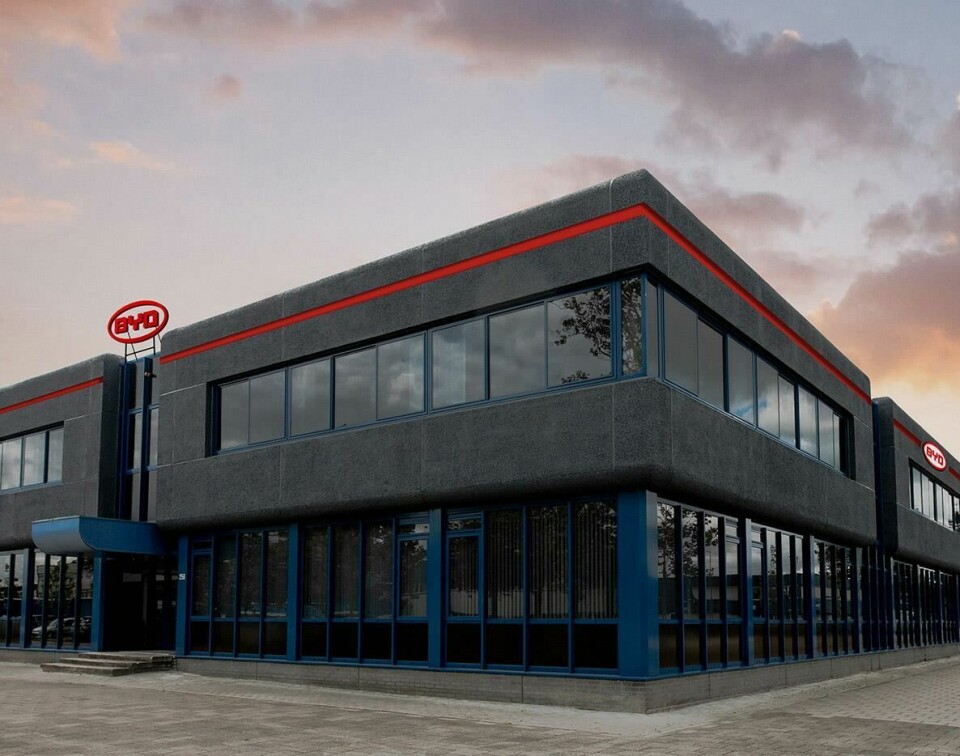On the road to recovery in the east
The automotive industry in eastern Europe is in strong post-pandemic recovery mode, with associated gains for logistics providers. However, the region requires investment in transport and infrastructure improvements, and in EV production, if it is to build a competitive edge against a Chinese foothold in Hungary

The automotive industry in Central and Eastern Europe (CEE) has largely bounced back after the turbulent era of the Covid pandemic and the fallout of the Ukraine war. The long-term outlook, however, remains somewhat uncertain, as the region needs to keep its competitive edge in a rapidly changing world.
There are reasons to say that last year brought a much-anticipated recovery for the European automotive industry.
In the first 11 months of 2023, finished vehicle registrations in the EU climbed by a solid 15.7%, reaching nearly 10m units, according to a spokesperson for the European Manufacturers Association (Acea).
“This was primarily fuelled by growing demand, indicating a positive trend in consumer interest and economic conditions within the whole region,” says its spokesperson.
Europe’s overall sustained growth was consistent, with November marking the 16th consecutive month of expansion in the EU finished vehicle market. All EU markets, except Hungary, experienced growth during this period.
Individually, CEE countries saw their performance in the automotive sector perking up last year.
“Automotive business in Slovakia was indeed very good in 2023,” says Viktor Marušák, general secretary of the Automotive Industry Association of the Slovak Republic (AIA-SR). “After the crisis in 2020-2022, we finally almost reached our top production level from 2019.”
Marušák points out that unlike several previous years, when various negative factors such as US-related lockdowns and the energy crisis weighed on operations, 2023 was relatively quiet. In addition, he praised the Kurzarbeit tool, which helped the automotive industry to keep employees in factories and ramp up production very quickly when needed.

The fact that JLR reached its top capacity in 2023 also fills the companies along the value chain with optimism.
“We expect that 2024 will be a record year for Slovakia in terms of the number of units produced,” says Marušák.
Acea, however, cautions against overestimating the power of the recovery trend, emphasising that the industry in Europe in general, and in the CEE region in particular, is not out of the woods yet.
“Despite the overall growth, 2023 full-year EU registrations are expected to remain nearly 20% less than the volumes recorded in 2019. This implies that while recovery is evident, the industry has not yet fully returned to pre-pandemic levels,” the spokesperson says.
Rising flows buttress logistics
The current trend looks like something more than just an ordinary recovery. In fact, automotive companies are shifting finished vehicle production to CEE countries, comments Aleksander Raczyński, head of finished vehicle logistics for eastern Europe, Germany, Austria and Switzerland, Ceva Logistics.
“After the shocks caused by the Covid pandemic and Russia’s invasion of Ukraine, car production volumes in CEE have returned to the pre-crisis level,” Raczyński indicates.
The automotive sector is driving industry in the CEE region, which is still very dynamic, he notes, adding that Poland remains the leader in the region, followed by the Czech Republic. New factories are being built, which calls for investment in automotive carriers.
“There is big competition and logistics players want to increase market share,” Raczyński says.
Other logistics providers in the CEE region agree that the sector is on the recovery track, as cargo flows are on the rise.
Krzysztof Szeligowski, chief sales officer for finished vehicle logistics (FVL) at Adampol, stresses the benefits of a stable automotive market, such as the logistics sector enjoyed in 2023. He explains that this definition implies the absence of unexpected breaks, such as problems with semiconductors, as well as stable fuel prices and predictable sales.
In the end, this made it possible for the logistics providers to use capacity to the maximum possible extent, avoid dwell times and empty runs. Those are things not all operations could boast of in previous years, according to Szeligowski.

“Last year was generally a positive year for the region, proving to be more stable than 2022.” comments Andreea Maria Serbu, senior manager of external affairs with the Association of European Vehicle Logistics (ECG). “Major disruptions from 2022 had a lesser impact on the industry, particularly in the latter part of the year.”
It was not only companies transporting finished vehicles that enjoyed an upswing in their performance in 2023. The dynamics were very similar in the automotive components segment.
“Last year was an excellent year for our growth in CEE. We now have five offices in this region and all showed positive volume growth over the previous year,” says Stuart Stobie, chief commercial officer at Priority Freight.
Streamlining operations
Several long-standing issues, such as railway congestion, labour shortages and difficulties in sourcing new trucks and trailers, appeared to be less pressing in 2023, or at least did not become more troubling despite a shift in cargo flows, according to market players.
“The second half of the year was without bigger disruptions to the rail network. However, construction works, especially in Germany, and ongoing salary negotiations with trade unions could be a challenge for 2024,” notes Adampol’s Szeligowski.
Andreas Sundl, chief operations officer at Hödlmayr International, says: “The evolution of railway infrastructure is a long-lasting issue driven by several factors, including the need for a more integrated, efficient and sustainable transport system.”
“The evolution of railway infrastructure is a long-lasting issue driven by several factors, including the need for a more integrated, efficient and sustainable transport system”
Sundl expressed confidence that the European railway is braced for tangible improvements in the long run, which should also benefit automotive logistics in the CEE region.
“The EU is working on improving the interoperability and digitalisation of railways. This will increase Europe’s rail capacity and improve reliability and service,” Sundl says, admitting, however, that it will take years before the investments pay off.
Railway congestion, coupled with the long delivery time of new fleets, led to occasional capacity shortages in the CEE logistics industry in the past few years.
“We still observe some challenges,” says Ceva Logistics’s Raczyński. “Ceva reacted to market needs in advance and in 2024 we will be able to operate our own trucks, which will give more stability to operations.”
Speaking about the transport capacity shortage, Raczyński indicates that he doesn’t anticipate any radical changes in 2024. He assumes that this year could be marked with slightly less pressure on truck capacity but warned that other disruptions may appear because of the geopolitical situation
“Truck and trailer delivery didn’t change, and I don’t expect much change. Maybe it would be easier with trucks depending on general cargo orders and pick-ups,” adds Szeligowski.
The issue of driver shortage, especially prominent in the second half of 2022, became less acute last year, according to ECG’s Serbu.

“Surveys conducted among our members reveal that the shortage has diminished as a concern in the latter part of 2023,” she says. “Operators in the CEE region also did not appear to be significantly affected by driver shortages.”
“At Adampol, the situation with drivers is stable and there is no shortage at the moment. It could change if the general cargo business comes back to normal,” adds Szeligowski.
New clouds on the horizon
While some issues in the logistics sector are bothering businesses less, others may come to the fore. As the sector looks towards 2024, uncertainties arise, Serbu says. The conclusion of 2023 saw disruptions in the Red Sea, potentially impacting costs and delays in 2024 if the situation does not improve in the coming weeks.
In addition, Serbu warns that transport operators face further challenges with the introduction of European legislation such as the Eurovignette directive on road use pricing. By March 25, 2024, EU member states are required to implement it, involving differentiated road user charges for heavy duty vehicles based on CO2 emission classes. Some member states, such as Germany, have already implemented it, leading to an 8% cost increase for all companies transiting through Germany.
Szeligowski agrees that logistics providers in the CEE region see the new regulation regarding environmental and social governance (ESG) reporting as a challenge.
In addition, the logistics sector in the CEE region may be further impacted by the new regulation demanding that truck operators will also need to retrofit all vehicles with the update of the smart tachograph by August 2025. This retrofitting aims to monitor compliance with EU driving and rest time and cabotage rules, and the posting of drivers.
“Operators are advised to plan in advance for such retrofitting to avoid potential issues and prevent trucks from being stuck in parking lots,” says Serbu.

Tectonic transition
However, no factors are expected to impact the CEE automotive logistics as much as the transition to electric vehicles (EVs).
John Szabó, a fellow at the Institute for World Economics, believes the EV transition is a significant threat to the CEE automotive industry. In a study released in January 2023, he wrote: “Our findings suggest that the solely positive image trumpeted by car manufacturers of the transition towards an EV industry is actually much more complex, as the region is subject to fierce geo-economic competition to the detriment of labour.”
For years, CEE countries were “an assembly hall” for western OEMs, who took advantage of the region’s favourable investment and tax conditions, cheap but experienced labour force, and access to the common European market.
According to Szabó, the competitive advantages of the CEE region are not that evident when it comes to EV production, which requires fewer components and less labour. Besides, at least some governments of the region were slow to introduce economic incentives for the companies involved in EV production, which could eventually leave them lagging behind in the global race for investments.
“To a degree, the CEE region already lost some of its competitive edge,” comments Dr Pál Négyesi, managing director at CE Auto, a Budapest-based think tank, pointing out the fact that some wiring harness production had already been transferred to Tunisia and Morocco.
“With the rise of EVs and the increasing automation of manufacturing processes, the downsizing of suppliers in the region will become unavoidable in about 2-3 years’ time, and the deglobalisation efforts of some companies will not be able to reduce this significantly,” Négyesi claims.
“With the rise of EVs and the increasing automation of manufacturing processes, the downsizing of suppliers in the region will become unavoidable in about 2-3 years’ time, and the deglobalisation efforts of some companies will not be able to reduce this significantly,” Négyesi claims.
In CEE, production and supplier networks are still more geared towards internal combustion engine (ICE) vehicles, he adds.
“In addition to the increase in demand for new cars, on the supplier side, the switch to EVs and the relocation of a small part of the production from western Europe has stimulated the economies of the countries in the region, which for the time being is able to offset the incipient decline in the production of ICE components,” Négyesi indicates.

Some logistics factors, such as the chronic shortage of drivers in the CEE, also look like a competitive disadvantage for the region in the quest to attract new investments, according to Négyesi.
AIA-SR’s Marušák says the place of the Slovak automotive industry in the post-EV transition world will be determined by today’s political decision.
“The next three to four years will be important when emphasis must be placed on obtaining new investments and reinvestments,” says Marušák “From today’s point of view, we see no reason to believe that Slovakia or the [CEE] region should lose competitiveness. Of course, bad political decisions can cause this.”.
Adapting to survive
Adampol’s Szeligowski agrees the EV transition would be a game-changer for the automotive sector of the CEE region and primarily for suppliers delivering parts for combustion engines. He adds that in Poland, three plants are closed completely, but a few new ones will be opened, focusing on the EV supply chain.
“From a logistics point of view, new plants in Hungary, such as those owned by BMW and BYD, will make the imbalance of flows from west to east much higher, especially as EVs from the west are not so popular because of the lack of infrastructure,” Szeligowski says.
With a simpler supply chain, in terms of parts needed to assemble them, EVs still require unique solutions related to their lithium batteries, according to Ceva’s Raczyński. He is confident that the logistics providers have to adapt their business to serve growing EV flows.
“From a technical standpoint, EVs are notably heavy, exerting pressure on trailer construction and truck transport in general,” he says.
Ceva is participating in European pilot programmes, such as Respect, to explore and build circular economies around used EV batteries.

The logistics sector will experience increased demand for EV charging infrastructure, requiring significant investments, adds Hödlmayr’s Sundl. Logistics providers must adapt to changing demand patterns and supply chain requirements to efficiently manage the transport of EV components and vehicles.
“Overall, this transition presents both challenges and opportunities for the logistics sector, with potential for innovative solutions,” Sundl states.
Priority Freight’s Stobie, in turn, indicates that battery providers are trying to establish themselves in many European countries. However, as the main minerals for these batteries are still sourced in the Far East, this makes the transport of them likely to remain costly with the restrictions surrounding these dangerous goods, particularly as volumes increase.
ECG’s Serbu believes the CEE region is a highly efficient automotive manufacturing hub and will continue to be so by adapting to the EV transition.
She agrees that the EV transition could further exacerbate already imbalanced west-east logistics flows, especially as the prices of EVs are still high, making the CEE a small market for such vehicles.
Hungary looks for an independent path
When it comes to EV transition in the CEE region, one more powerful factor is in play. In recent years, Hungarian Prime Minister Viktor Orbán has been making great efforts to forge stronger ties with China, and these moves have secured an inflow of investments into the Hungarian EV industry.
Over the past year, Chinese battery manufacturers have announced more than $10.9 billion worth of investments in Hungarian factories. BYD, Eve Energy, Huayou Cobalt and Ningbo Zhenyu Technology are a few big names that have rolled out new EV projects in Hungary. Some analysts believe that Chinese companies could use Hungary as a gateway to the common European market, which will radically impact the EV industry on the entire continent.
CE Auto’s Dr Négyesi says this is all a part of a big political play, as Orbán uses its close relations with China in its quest against the EU. “The EU blocked a total of more than €30 billion ($32.3 billion) in funding [for Hungary], citing rule-of-law concerns. Now, part of that has been unfrozen, but to access the rest, Hungary must fulfil 27 super milestones, as well as four horizontal-enabling conditions,” says Négyesi.
As Orbán could not access the funds and Hungary had the biggest inflation in Europe, he made a huge gamble on basically handing over Hungarian natural resources and infrastructure to Chinese companies, according to Négyesi.

“Obviously, the Chinese are very happy to exploit the opportunities presented by the current Hungarian situation,” says Négyesi. “BYD, which already has a bus assembly plant in Komárom, will build a sprawling factory near Szeged. This clearly indicates that the Chinese are looking at Hungary as a gateway to Europe.”
However, in addition to environmental concerns, the logistics side is also going to be crucial for the Chinese EV sector expansion in Hungary. The upgrade to the Budapest-Belgrade railway line, which is primarily financed by China’s Exim Bank and would serve as the primary transport route, has hit a major snag, Négyesi indicates.
“There is no solution in sight at the moment, which is quite alarming regarding the completion of the project,” he says.
Besides that, Négyesi highlights a probe, now underway, where the EU seeks to determine whether cheaper, Chinese-made EVs benefit unfairly from state subsidies, as it could hurt the development plans of Chinese businesses in Europe.





